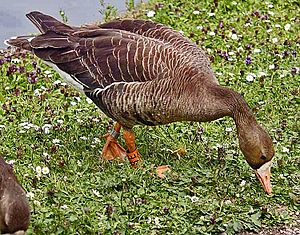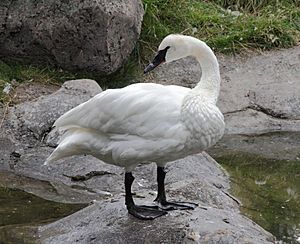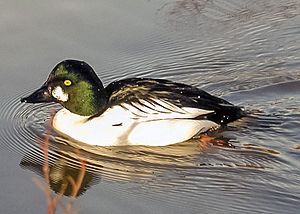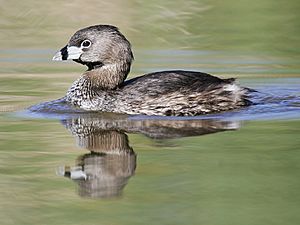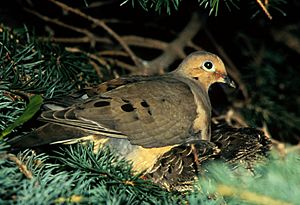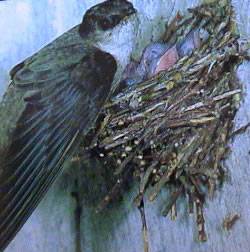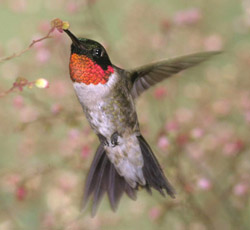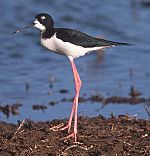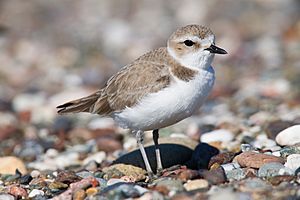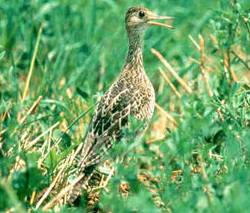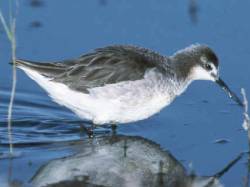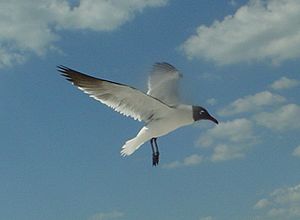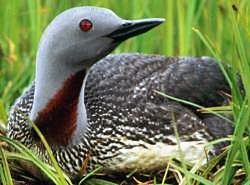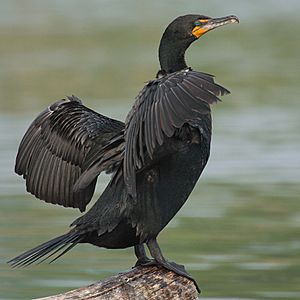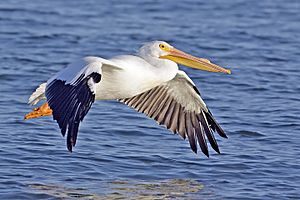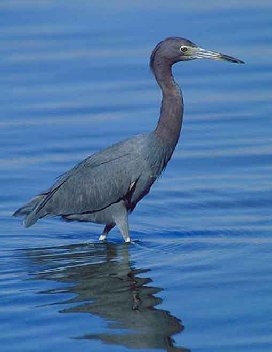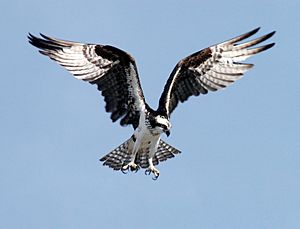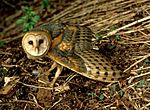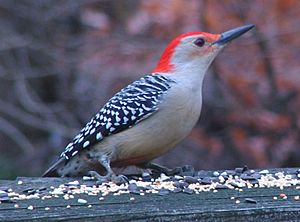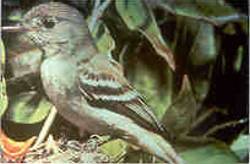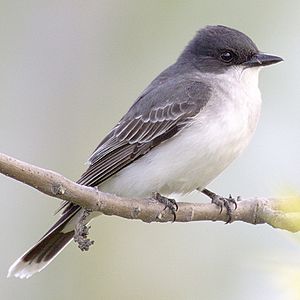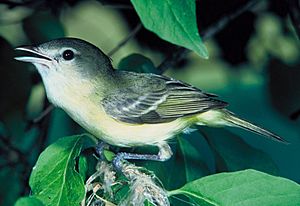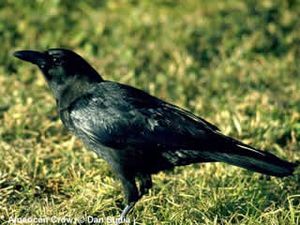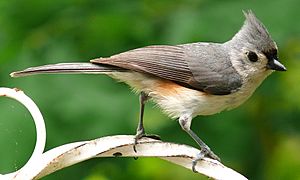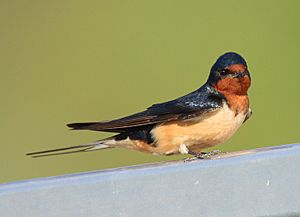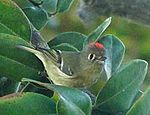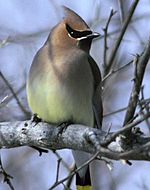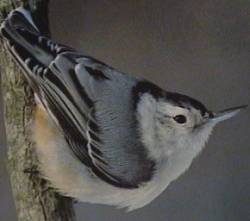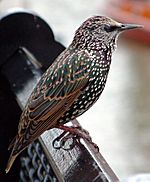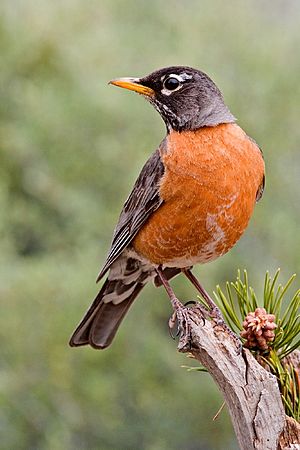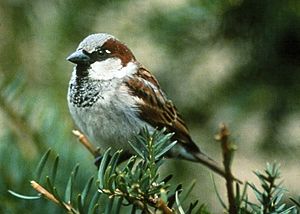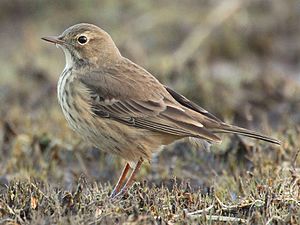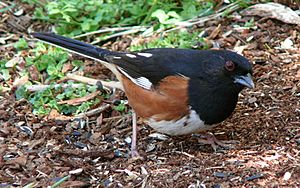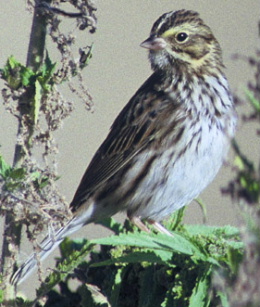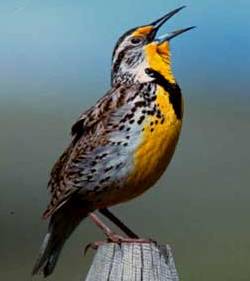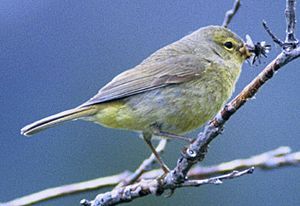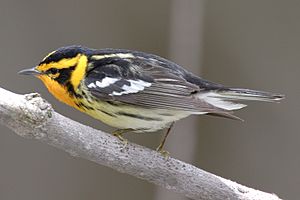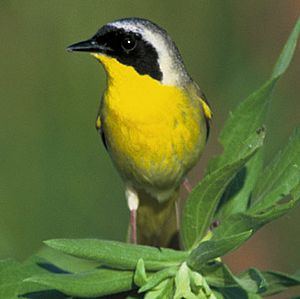List of birds of Oklahoma facts for kids
Oklahoma is a great place for birdwatching! This state is home to many different kinds of birds. As of May 2022, there were 488 types of birds officially recorded here. Some of these birds live in Oklahoma all the time. Others visit during summer or winter, or just pass through when they migrate. A few birds are very rare visitors, called "accidental" species. Some have been brought to North America by people, and sadly, a couple are now extinct. This list follows the scientific order used by bird experts.
Contents
- Ducks, Geese, and Waterfowl: Amazing Swimmers
- New World Quail: Small Ground Birds
- Pheasants, Grouse, and Allies: Game Birds
- Grebes: Diving Birds
- Pigeons and Doves: Common Birds
- Cuckoos: Unique Birds
- Nightjars and Allies: Nighttime Hunters
- Swifts: Masters of Flight
- Hummingbirds: Tiny, Fast Flyers
- Rails, Gallinules, and Coots: Shy Water Birds
- Limpkin: A Unique Wader
- Cranes: Tall, Graceful Birds
- Stilts and Avocets: Long-Legged Waders
- Plovers and Lapwings: Shoreline Birds
- Sandpipers and Allies: Diverse Shorebirds
- Skuas and Jaegers: Agile Sea Hunters
- Gulls, Terns, and Skimmers: Coastal Birds
- Loons: Excellent Divers
- Storks: Large Wading Birds
- Frigatebirds: Aerial Masters
- Boobies and Gannets: Plunge Divers
- Anhingas: Snake-like Swimmers
- Cormorants and Shags: Dark Water Birds
- Pelicans: Birds with Pouches
- Herons, Egrets, and Bitterns: Wading Birds
- Ibises and Spoonbills: Unique Bills
- New World Vultures: Nature's Clean-Up Crew
- Osprey: Fish-Eating Raptors
- Hawks, Eagles, and Kites: Powerful Hunters
- Barn-Owls: Heart-Faced Hunters
- Owls: Nighttime Predators
- Kingfishers: Fisher Birds
- Woodpeckers: Tree Drummers
- Falcons and Caracaras: Fast Hunters
- New World and African Parrots: Colorful Talkers
- Tyrant Flycatchers: Insect Eaters
- Vireos: Small Greenish Birds
- Shrikes: Impaling Hunters
- Crows, Jays, and Magpies: Smart Birds
- Tits, Chickadees, and Titmice: Small Woodland Birds
- Penduline-Tits: Tiny Insectivores
- Larks: Ground Birds with Songs
- Swallows: Aerial Feeders
- Long-tailed Tits: Woven Nests
- Kinglets: Tiny Crowned Birds
- Waxwings: Silky Feathers and Berries
- Silky-Flycatchers: Crested Birds
- Nuthatches: Head-First Climbers
- Treecreepers: Bark Explorers
- Gnatcatchers: Tiny Insect Hunters
- Wrens: Loud Singers
- Mockingbirds and Thrashers: Master Mimics
- Starlings: Social Birds
- Thrushes and Allies: Ground Feeders with Songs
- Old World Sparrows: Small Seed Eaters
- Wagtails and Pipits: Ground-Feeding Insectivores
- Finches, Euphonias, and Allies: Cone-Billed Singers
- Longspurs and Snow Buntings: Grassy Field Birds
- New World Sparrows: Diverse Head Patterns
- Yellow-breasted Chat: A Unique Bird
- Troupials and Allies: Colorful New World Birds
- New World Warblers: Small and Bright
- Cardinals and Allies: Strong-Billed Seed Eaters
- Images for kids
- See also
Ducks, Geese, and Waterfowl: Amazing Swimmers
Order: Anseriformes Family: Anatidae
This family includes ducks, geese, and swans. These birds are built for life in the water. They have webbed feet to help them swim. Their bills are often flat, and their feathers are waterproof. This is thanks to special oils that keep them dry.
- Black-bellied whistling-duck (Accidental)
- Fulvous whistling-duck (Accidental)
- Snow goose
- Ross's goose (Accidental)
- Greater white-fronted goose
- Brant
- Barnacle goose (Accidental)
- Cackling goose
- Canada goose
- Mute swan (Introduced, Uncertain origin)
- Trumpeter swan
- Tundra swan (Accidental)
- Wood duck
- Baikal teal (Hypothetical)
- Garganey (Accidental)
- Blue-winged teal
- Cinnamon teal (Accidental)
- Northern shoveler
- Gadwall
- Eurasian wigeon
- American wigeon
- Mallard
- Mexican duck (Accidental)
- American black duck (Accidental)
- Mottled duck
- Northern pintail
- Green-winged teal
- Canvasback
- Redhead
- Ring-necked duck
- Greater scaup (Accidental)
- Lesser scaup
- Surf scoter (Accidental)
- White-winged scoter
- Black scoter (Accidental)
- Long-tailed duck (Accidental)
- Bufflehead
- Common goldeneye
- Barrow's goldeneye
- Hooded merganser
- Common merganser
- Red-breasted merganser
- Masked duck (Accidental)
- Ruddy duck
New World Quail: Small Ground Birds
Order: Galliformes Family: Odontophoridae
New World quails are small, round birds that live on the ground. They look a bit like Old World quails but are not closely related.
Pheasants, Grouse, and Allies: Game Birds
Order: Galliformes Family: Phasianidae
This family includes pheasants and their relatives. They are ground birds that vary in size. Many are hunted for sport or raised for food.
- Wild turkey
- Gunnison sage-grouse (Hypothetical, Accidental)
- Sharp-tailed grouse (Hypothetical)
- Greater prairie-chicken
- Lesser prairie-chicken
- Ring-necked pheasant (Introduced)
Grebes: Diving Birds
Order: Podicipediformes Family: Podicipedidae
Grebes are small to medium-sized birds that dive in freshwater. They have special lobed toes that help them swim and dive very well. However, their feet are set far back on their bodies, making them clumsy on land.
- Least grebe (Accidental)
- Pied-billed grebe
- Horned grebe
- Red-necked grebe (Accidental)
- Eared grebe
- Western grebe
- Clark's grebe (Accidental)
Pigeons and Doves: Common Birds
Order: Columbiformes Family: Columbidae
Pigeons and doves are birds with sturdy bodies, short necks, and thin bills.
- Rock pigeon (Introduced)
- Band-tailed pigeon
- Eurasian collared-dove (Introduced)
- Passenger pigeon (Extinct)
- Inca dove
- Common ground dove
- White-winged dove
- Mourning dove
Cuckoos: Unique Birds
Order: Cuculiformes Family: Cuculidae
This family includes cuckoos, roadrunners, and anis. These birds have slender bodies, long tails, and strong legs. Some cuckoos are known for laying their eggs in other birds' nests.
Nightjars and Allies: Nighttime Hunters
Order: Caprimulgiformes Family: Caprimulgidae
Nightjars are medium-sized birds that are active at night. They usually build their nests on the ground. They have long wings, short legs, and very small bills. Their soft feathers are colored to blend in with tree bark or leaves.
- Lesser nighthawk
- Common nighthawk
- Common poorwill (Accidental)
- Chuck-will's-widow
- Eastern whip-poor-will
Swifts: Masters of Flight
Order: Apodiformes Family: Apodidae
Swifts are small birds that spend most of their lives flying. They have very short legs and almost never land on the ground. Instead, they perch on vertical surfaces. Many swifts have long, swept-back wings that look like a crescent moon.
- Chimney swift
- White-throated swift (Hypothetical, Accidental)
Hummingbirds: Tiny, Fast Flyers
Order: Apodiformes Family: Trochilidae
Hummingbirds are tiny birds famous for hovering in mid-air. They flap their wings incredibly fast. They are the only birds that can fly backward!
- Mexican violetear (Accidental)
- Rivoli's hummingbird (Accidental)
- Blue-throated mountain-gem (Hypothetical, Accidental)
- Ruby-throated hummingbird
- Black-chinned hummingbird
- Anna's hummingbird (Accidental)
- Costa's hummingbird (Accidental)
- Calliope hummingbird
- Rufous hummingbird (Accidental)
- Broad-tailed hummingbird
- Broad-billed hummingbird (Accidental)
Rails, Gallinules, and Coots: Shy Water Birds
Order: Gruiformes Family: Rallidae
This is a large family of small to medium-sized birds. It includes rails, crakes, coots, and gallinules. Most of these birds live in thick plants near lakes, swamps, or rivers. They are often shy and hard to spot. They have strong legs and long toes, which are great for walking on soft, uneven ground. They tend to have short, rounded wings and are not strong fliers.
- King rail
- Virginia rail
- Sora
- Common gallinule (Accidental)
- American coot
- Purple gallinule (Accidental)
- Yellow rail
- Black rail
Limpkin: A Unique Wader
Order: Gruiformes Family: Aramidae
The limpkin is a unique bird that looks like a large rail. However, its bones are more like those of cranes.
- Limpkin (Accidental)
Cranes: Tall, Graceful Birds
Order: Gruiformes Family: Gruidae
Cranes are large birds with long legs and long necks. Unlike herons, which look similar, cranes fly with their necks stretched out. They are known for their fancy and loud courtship dances.
- Sandhill crane (Accidental, but common during migration)
- Common crane (Accidental)
- Whooping crane
Stilts and Avocets: Long-Legged Waders
Order: Charadriiformes Family: Recurvirostridae
This family includes avocets and stilts. They are large wading birds. Avocets have long legs and bills that curve upward. Stilts have extremely long legs and long, thin, straight bills.
Plovers and Lapwings: Shoreline Birds
Order: Charadriiformes Family: Charadriidae
This family includes plovers, dotterels, and lapwings. They are small to medium-sized birds with compact bodies and short, thick necks. They have long, often pointed, wings. You can find them in open areas around the world, usually near water.
- Black-bellied plover
- American golden-plover
- Killdeer
- Semipalmated plover
- Piping plover
- Wilson's plover (Accidental)
- Snowy plover (Accidental, but a regular summer resident)
- Mountain plover
Sandpipers and Allies: Diverse Shorebirds
Order: Charadriiformes Family: Scolopacidae
This is a large and varied family of small to medium-sized shorebirds. It includes sandpipers, curlews, godwits, and many others. Most of these birds eat small bugs they find in mud or soil. Different lengths of legs and bills allow many species to feed in the same places without competing for food.
- Upland sandpiper
- Whimbrel (Accidental)
- Eskimo curlew (Possibly Extinct, Accidental)
- Long-billed curlew
- Hudsonian godwit
- Marbled godwit
- Ruddy turnstone
- Red knot
- Ruff (Accidental)
- Stilt sandpiper
- Curlew sandpiper (Hypothetical, Accidental)
- Sanderling
- Dunlin
- Purple sandpiper (Accidental)
- Baird's sandpiper
- Least sandpiper
- White-rumped sandpiper
- Buff-breasted sandpiper
- Pectoral sandpiper
- Semipalmated sandpiper
- Western sandpiper
- Short-billed dowitcher
- Long-billed dowitcher
- American woodcock
- Wilson's snipe
- Solitary sandpiper
- Lesser yellowlegs
- Willet
- Spotted redshank
- Greater yellowlegs
- Wilson's phalarope
- Red-necked phalarope
- Red phalarope
Skuas and Jaegers: Agile Sea Hunters
Order: Charadriiformes Family: Stercorariidae
Skuas and jaegers are medium to large birds, usually gray or brown. They often have white marks on their wings. They have longish bills with hooked tips and webbed feet with sharp claws. They are strong, acrobatic fliers.
Gulls, Terns, and Skimmers: Coastal Birds
Order: Charadriiformes Family: Laridae
This family includes gulls, terns, and skimmers. They are medium to large seabirds, usually gray or white. They often have black marks on their heads or wings. They have strong, longish bills and webbed feet.
- Black-legged kittiwake (Accidental)
- Sabine's gull (Accidental)
- Bonaparte's gull
- Black-headed gull
- Little gull (Accidental)
- Laughing gull (Accidental)
- Franklin's gull
- Heermann's gull (Accidental)
- Short-billed gull (Accidental)
- Ring-billed gull
- California gull
- Herring gull
- Iceland gull (Accidental)
- Lesser black-backed gull (Accidental)
- Glaucous-winged gull
- Glaucous gull (Accidental)
- Great black-backed gull (Accidental)
- Sooty tern (Accidental)
- Least tern
- Caspian tern
- Black tern
- Common tern
- Arctic tern (Accidental)
- Forster's tern
- Royal tern (Accidental)
- Black skimmer
Loons: Excellent Divers
Order: Gaviiformes Family: Gaviidae
Loons are aquatic birds, about the size of a large duck. They are mostly gray or black and have spear-shaped bills. Loons swim very well and fly adequately. However, they are almost helpless on land because their legs are placed far back on their bodies.
- Red-throated loon (Accidental)
- Pacific loon (Accidental)
- Common loon
- Yellow-billed loon
Storks: Large Wading Birds
Order: Ciconiiformes Family: Ciconiidae
Storks are large, heavy birds with long legs and necks. They have long, strong bills and wide wings. Unlike other wading birds, storks do not have a special powder to clean fish slime from their feathers. They also do not have a voice box, so they are mute.
- Jabiru (Accidental)
- Wood stork
Frigatebirds: Aerial Masters
Order: Suliformes Family: Fregatidae
Frigatebirds are large seabirds found over tropical oceans. They are black, or black and white, with long wings and deeply forked tails. Males have colorful throat pouches that they can inflate. They cannot swim or walk well, and they cannot take off from a flat surface. They have the largest wingspan for their body weight of any bird, allowing them to stay in the air for over a week!
- Magnificent frigatebird
- Great frigatebird (Accidental)
Boobies and Gannets: Plunge Divers
Order: Suliformes Family: Sulidae
This family includes gannets and boobies. Both are medium-large coastal seabirds that dive headfirst into the water to catch fish.
- Brown booby (Accidental)
- Northern gannet (Hypothetical, Accidental)
Anhingas: Snake-like Swimmers
Order: Suliformes Family: Anhingidae
Anhingas are water birds that look like cormorants. They have very long necks and long, straight beaks. They eat fish and often swim with only their neck above the water, looking like a snake.
- Anhinga (Accidental)
Cormorants and Shags: Dark Water Birds
Order: Suliformes Family: Phalacrocoracidae
Cormorants are medium to large aquatic birds. They usually have dark feathers and colored skin on their faces. Their bills are long, thin, and sharply hooked. They have four webbed toes.
Pelicans: Birds with Pouches
Order: Pelecaniformes Family: Pelecanidae
Pelicans are very large water birds. They have a special pouch under their beak to scoop up fish. Like other birds in their group, they have four webbed toes.
- American white pelican
- Brown pelican (Accidental)
Herons, Egrets, and Bitterns: Wading Birds
Order: Pelecaniformes Family: Ardeidae
This family includes herons, egrets, and bitterns. Herons and egrets are medium to large wading birds with long necks and legs. Bitterns have shorter necks and are more secretive. Birds in this family fly with their necks pulled back, unlike storks or ibises.
- American bittern
- Least bittern
- Great blue heron
- Great egret
- Snowy egret
- Little blue heron
- Tricolored heron
- Reddish egret (Accidental)
- Cattle egret
- Green heron
- Black-crowned night-heron
- Yellow-crowned night-heron
Ibises and Spoonbills: Unique Bills
Order: Pelecaniformes Family: Threskiornithidae
This family includes ibises and spoonbills. They have long, broad wings and long bodies and necks. Their bills are also long. Ibises have bills that curve downward, while spoonbills have bills that are straight and flat like a spoon.
- White ibis (Accidental)
- Glossy ibis
- White-faced ibis (Accidental)
- Roseate spoonbill (Accidental)
New World Vultures: Nature's Clean-Up Crew
Order: Cathartiformes Family: Cathartidae
New World vultures are not closely related to Old World vultures, but they look similar because they evolved in similar ways. Like Old World vultures, they eat dead animals. However, New World vultures have a good sense of smell to find food, while Old World vultures rely on sight.
Osprey: Fish-Eating Raptors
Order: Accipitriformes Family: Pandionidae
The Osprey family has only one type of bird. These are fish-eating birds of prey. They have very large, strong hooked beaks to tear meat. They also have strong legs, powerful claws, and excellent eyesight.
Hawks, Eagles, and Kites: Powerful Hunters
Order: Accipitriformes Family: Accipitridae
This family includes hawks, eagles, kites, and harriers. These birds of prey have very large, strong hooked beaks for tearing meat from their prey. They also have strong legs, powerful claws, and sharp eyesight.
- White-tailed kite
- Swallow-tailed kite
- Golden eagle
- Northern harrier
- Sharp-shinned hawk
- Cooper's hawk
- American goshawk
- Bald eagle
- Mississippi kite
- Common black hawk (Accidental)
- Harris's hawk
- Gray hawk (Hypothetical, Accidental)
- Red-shouldered hawk
- Broad-winged hawk
- Swainson's hawk
- Zone-tailed hawk (Accidental)
- Red-tailed hawk
- Rough-legged hawk
- Ferruginous hawk
Barn-Owls: Heart-Faced Hunters
Order: Strigiformes Family: Tytonidae
Barn owls are medium to large owls. They have big heads and a special heart-shaped face. They also have long, strong legs with powerful claws.
Owls: Nighttime Predators
Order: Strigiformes Family: Strigidae
Typical owls are solitary birds of prey that are active at night. They have large eyes that face forward and good hearing. They have a beak like a hawk and a clear circle of feathers around each eye called a facial disk.
- Western screech-owl
- Eastern screech-owl
- Great horned owl
- Snowy owl (Accidental)
- Burrowing owl (Accidental)
- Barred owl
- Long-eared owl
- Short-eared owl
- Northern saw-whet owl (Accidental)
Kingfishers: Fisher Birds
Order: Coraciiformes Family: Alcedinidae
Kingfishers are medium-sized birds. They have large heads, long pointed bills, short legs, and stubby tails.
- Ringed kingfisher (Accidental)
- Belted kingfisher
Woodpeckers: Tree Drummers
Order: Piciformes Family: Picidae
Woodpeckers are small to medium-sized birds. They have chisel-like beaks, short legs, stiff tails, and long tongues. They use their tongues to catch insects. Some woodpeckers have two toes pointing forward and two backward. Many woodpeckers tap loudly on tree trunks with their beaks.
- Lewis's woodpecker
- Red-headed woodpecker
- Acorn woodpecker
- Golden-fronted woodpecker
- Red-bellied woodpecker
- Williamson's sapsucker
- Yellow-bellied sapsucker
- Red-naped sapsucker
- Downy woodpecker
- Ladder-backed woodpecker
- Red-cockaded woodpecker
- Hairy woodpecker
- Northern flicker
- Pileated woodpecker
- Ivory-billed woodpecker (Accidental, possibly extinct)
Falcons and Caracaras: Fast Hunters
Order: Falconiformes Family: Falconidae
This family includes falcons and caracaras. They are birds of prey that are active during the day. They are different from hawks and eagles because they kill their prey with their beaks, not their claws.
New World and African Parrots: Colorful Talkers
Order: Psittaciformes Family: Psittacidae
Parrots are small to large birds with a special curved beak. They can move their upper beak a little. All parrots have two toes pointing forward and two backward on each foot. Most of the over 150 types in this family live in the Americas.
- Monk parakeet (Introduced, Uncertain origin, Accidental)
- Carolina parakeet (Extinct)
Tyrant Flycatchers: Insect Eaters
Order: Passeriformes Family: Tyrannidae
Tyrant flycatchers are songbirds found across North and South America. They look a bit like Old World flycatchers but are stronger and have tougher bills. They don't have the complex songs of other songbirds. Most of them eat insects.
- Dusky-capped flycatcher (Hypothetical, Accidental)
- Ash-throated flycatcher
- Great crested flycatcher
- Great kiskadee (Accidental)
- Couch's kingbird (Accidental)
- Cassin's kingbird
- Western kingbird
- Eastern kingbird
- Scissor-tailed flycatcher
- Olive-sided flycatcher
- Western wood-pewee
- Eastern wood-pewee
- Yellow-bellied flycatcher
- Acadian flycatcher
- Alder flycatcher (Accidental)
- Willow flycatcher
- Least flycatcher
- Hammond's flycatcher
- Gray flycatcher (Accidental)
- Dusky flycatcher
- Western flycatcher
- Black phoebe (Accidental)
- Eastern phoebe
- Say's phoebe (Accidental)
- Vermilion flycatcher (Accidental)
Vireos: Small Greenish Birds
Order: Passeriformes Family: Vireonidae
Vireos are a group of small to medium-sized songbirds. They are usually greenish and look like wood-warblers, but they have heavier bills.
- Black-capped vireo (Accidental)
- White-eyed vireo
- Bell's vireo
- Gray vireo
- Yellow-throated vireo
- Cassin's vireo
- Blue-headed vireo
- Plumbeous vireo
- Philadelphia vireo
- Warbling vireo
- Red-eyed vireo
Shrikes: Impaling Hunters
Order: Passeriformes Family: Laniidae
Shrikes are songbirds known for catching other birds and small animals. They sometimes stick the uneaten parts of their prey on thorns. A shrike's beak is hooked, like a bird of prey.
- Loggerhead shrike
- Northern shrike
Crows, Jays, and Magpies: Smart Birds
Order: Passeriformes Family: Corvidae
This family includes crows, ravens, jays, and magpies. These birds are larger than average songbirds. Some of the bigger types are very intelligent.
- Canada jay (Hypothetical, Accidental)
- Pinyon jay
- Steller's jay
- Blue jay
- Woodhouse's scrub-jay
- Clark's nutcracker (Accidental)
- Black-billed magpie
- American crow
- Fish crow
- Chihuahuan raven
- Common raven
Tits, Chickadees, and Titmice: Small Woodland Birds
Order: Passeriformes Family: Paridae
The Paridae family includes small, sturdy woodland birds with short, strong bills. Some have crests on their heads. They are adaptable birds that eat a mix of seeds and insects.
- Carolina chickadee
- Black-capped chickadee
- Mountain chickadee
- Juniper titmouse
- Tufted titmouse
- Black-crested titmouse
Penduline-Tits: Tiny Insectivores
Order: Passeriformes Family: Remizidae
Penduline-tits are a group of small songbirds related to the true tits. They eat insects.
Larks: Ground Birds with Songs
Order: Passeriformes Family: Alaudidae
Larks are small ground birds. They often have impressive songs and display flights. Most larks look quite plain. They eat insects and seeds.
Swallows: Aerial Feeders
Order: Passeriformes Family: Hirundinidae
The swallow family is built for catching food while flying. They have slender bodies, long pointed wings, and short bills with wide mouths. Their feet are better for perching than walking.
- Bank swallow
- Tree swallow
- Violet-green swallow (Accidental)
- Northern rough-winged swallow
- Purple martin
- Barn swallow
- Cliff swallow
- Cave swallow (Accidental)
Long-tailed Tits: Woven Nests
Order: Passeriformes Family: Aegithalidae
Long-tailed tits are small songbirds with medium to long tails. They build woven bag-like nests in trees. Most of them eat a mix of food, including insects.
Kinglets: Tiny Crowned Birds
Order: Passeriformes Family: Regulidae
Kinglets are a small family of birds that look like titmice. They are very tiny birds that eat insects. Adult kinglets have colored crowns on their heads, which gives them their name.
Waxwings: Silky Feathers and Berries
Order: Passeriformes Family: Bombycillidae
Waxwings are birds with soft, silky feathers. They have unique red tips on some of their wing feathers. These tips look like sealing wax, which is how they got their name. These birds live in northern forests. They eat insects in summer and berries in winter.
- Bohemian waxwing (Accidental)
- Cedar waxwing
Silky-Flycatchers: Crested Birds
Order: Passeriformes Family: Ptiliogonatidae
Silky-flycatchers are a small family of songbirds found mostly in Central America. They are related to waxwings and also have soft, silky feathers, usually gray or pale yellow. They have small crests on their heads.
- Phainopepla (Hypothetical, Accidental)
Nuthatches: Head-First Climbers
Order: Passeriformes Family: Sittidae
Nuthatches are small woodland birds. They have a special ability to climb down trees headfirst, which most other birds cannot do. Nuthatches have big heads, short tails, and strong bills and feet.
Treecreepers: Bark Explorers
Order: Passeriformes Family: Certhiidae
Treecreepers are small woodland birds, brown on top and white underneath. They have thin, pointed bills that curve downward. They use these bills to pull insects out of tree bark. They have stiff tail feathers, like woodpeckers, which help them support themselves on vertical trees.
Gnatcatchers: Tiny Insect Hunters
Order: Passeriformes Family: Polioptilidae
These delicate birds look and act like Old World warblers. They move constantly through leaves looking for insects. Gnatcatchers are mostly soft bluish-gray. They have the long, sharp bill typical of insect-eating birds. Many have distinct black patterns on their heads (especially males) and long, often upright, black and white tails.
Wrens: Loud Singers
Order: Passeriformes Family: Troglodytidae
Wrens are small and often hard to see, but they have very loud songs. They have short wings and thin bills that curve downward. Several types often hold their tails straight up. All wrens eat insects.
- Rock wren (Accidental)
- Canyon wren
- House wren
- Winter wren
- Sedge wren
- Marsh wren
- Carolina wren
- Bewick's wren
Mockingbirds and Thrashers: Master Mimics
Order: Passeriformes Family: Mimidae
The mimids are a family of songbirds that includes thrashers, mockingbirds, and catbirds. These birds are famous for their singing. They can copy a wide range of other bird calls and outdoor sounds. They usually have dull gray and brown feathers.
Starlings: Social Birds
Order: Passeriformes Family: Sturnidae
Starlings are small to medium-sized songbirds with strong feet. They fly strongly and directly and often gather in large groups. They prefer open areas and eat insects and fruit. Their feathers are usually dark with a shiny, metallic look.
- European starling (Introduced)
Thrushes and Allies: Ground Feeders with Songs
Order: Passeriformes Family: Turdidae
Thrushes are a group of songbirds, mostly found in the Old World. They are plump, soft-feathered, and small to medium-sized. They eat insects or a mix of foods, often feeding on the ground. Many have beautiful songs.
- Eastern bluebird
- Western bluebird
- Mountain bluebird (Accidental)
- Townsend's solitaire (Accidental)
- Veery
- Gray-cheeked thrush
- Swainson's thrush
- Hermit thrush
- Wood thrush
- American robin
- Varied thrush (Accidental)
Old World Sparrows: Small Seed Eaters
Order: Passeriformes Family: Passeridae
Old World sparrows are small songbirds. They are generally small, plump, brownish or grayish birds with short tails and strong, short beaks. Sparrows mainly eat seeds, but they also eat small insects.
- House sparrow (Introduced)
Wagtails and Pipits: Ground-Feeding Insectivores
Order: Passeriformes Family: Motacillidae
This family includes wagtails and pipits. They are small songbirds with medium to long tails. They are slender birds that eat insects on the ground in open areas.
Finches, Euphonias, and Allies: Cone-Billed Singers
Order: Passeriformes Family: Fringillidae
Finches are songbirds that eat seeds. They are small to medium-sized and have strong, often cone-shaped beaks. All finches have twelve tail feathers and nine main wing feathers. They fly in a bouncy way, flapping and then gliding with closed wings. Most finches sing well.
- Evening grosbeak
- Pine grosbeak (Accidental)
- House finch
- Purple finch
- Cassin's finch
- Common redpoll (Accidental)
- Red crossbill (Accidental)
- White-winged crossbill (Accidental)
- Pine siskin
- Lesser goldfinch
- Lawrence's goldfinch (Accidental)
- American goldfinch
Longspurs and Snow Buntings: Grassy Field Birds
Order: Passeriformes Family: Calcariidae
This group of songbirds used to be with the New World sparrows. However, they are different in many ways and are usually found in open grassy areas.
New World Sparrows: Diverse Head Patterns
Order: Passeriformes Family: Passerellidae
Until 2017, these birds were part of a different family. Most are called sparrows, but they are not closely related to the Old World sparrows. Many of these birds have unique patterns on their heads.
- Cassin's sparrow
- Bachman's sparrow
- Grasshopper sparrow
- Rufous-collared sparrow (Accidental)
- Black-throated sparrow
- Lark sparrow
- Lark bunting (Accidental)
- Chipping sparrow
- Clay-colored sparrow
- Field sparrow
- Brewer's sparrow
- Fox sparrow
- American tree sparrow
- Dark-eyed junco
- White-crowned sparrow
- Golden-crowned sparrow (Accidental)
- Harris's sparrow
- White-throated sparrow
- Sagebrush sparrow
- Vesper sparrow
- LeConte's sparrow
- Nelson's sparrow (Accidental)
- Baird's sparrow
- Henslow's sparrow (Accidental)
- Savannah sparrow
- Song sparrow
- Lincoln's sparrow
- Swamp sparrow
- Canyon towhee
- Rufous-crowned sparrow
- Green-tailed towhee
- Spotted towhee
- Eastern towhee
Yellow-breasted Chat: A Unique Bird
Order: Passeriformes Family: Icteriidae
This bird used to be grouped with the wood-warblers, but experts were not sure if it truly belonged there. In 2017, it was placed in its own family.
Troupials and Allies: Colorful New World Birds
Order: Passeriformes Family: Icteridae
The icterids are a group of small to medium-sized songbirds found only in the Americas. They include grackles, New World blackbirds, and New World orioles. Most types have black as their main feather color, often with bright yellow, orange, or red.
- Yellow-headed blackbird
- Bobolink
- Eastern meadowlark
- Western meadowlark
- Orchard oriole
- Hooded oriole (Accidental)
- Bullock's oriole
- Baltimore oriole
- Scott's oriole (Accidental)
- Red-winged blackbird
- Shiny cowbird
- Bronzed cowbird (Accidental)
- Brown-headed cowbird
- Rusty blackbird
- Brewer's blackbird
- Common grackle
- Great-tailed grackle
New World Warblers: Small and Bright
Order: Passeriformes Family: Parulidae
Wood-warblers are a group of small, often colorful songbirds found only in the Americas. Most live in trees, but some spend more time on the ground. Most birds in this family eat insects.
- Ovenbird
- Worm-eating warbler (Accidental)
- Louisiana waterthrush
- Northern waterthrush
- Golden-winged warbler (Accidental)
- Blue-winged warbler (Accidental)
- Black-and-white warbler
- Prothonotary warbler
- Swainson's warbler (Accidental)
- Tennessee warbler
- Orange-crowned warbler
- Nashville warbler
- Virginia's warbler
- Connecticut warbler (Accidental)
- MacGillivray's warbler
- Mourning warbler
- Kentucky warbler
- Common yellowthroat
- Hooded warbler (Accidental)
- American redstart
- Cape May warbler (Accidental)
- Cerulean warbler (Accidental)
- Northern parula
- Magnolia warbler
- Bay-breasted warbler
- Blackburnian warbler
- Yellow warbler
- Chestnut-sided warbler
- Blackpoll warbler
- Black-throated blue warbler (Accidental)
- Palm warbler
- Pine warbler (Accidental)
- Yellow-rumped warbler
- Yellow-throated warbler
- Prairie warbler (Accidental)
- Grace's warbler (Hypothetical, Accidental)
- Black-throated gray warbler
- Townsend's warbler
- Golden-cheeked warbler (Hypothetical, Accidental)
- Black-throated green warbler
- Canada warbler
- Wilson's warbler
Cardinals and Allies: Strong-Billed Seed Eaters
Order: Passeriformes Family: Cardinalidae
Cardinals are a family of strong, seed-eating birds with powerful bills. They usually live in open woodlands. Males and females often have different feather colors.
- Hepatic tanager (Accidental)
- Summer tanager
- Scarlet tanager (Accidental)
- Western tanager (Accidental)
- Northern cardinal
- Pyrrhuloxia
- Rose-breasted grosbeak
- Black-headed grosbeak (Accidental)
- Blue grosbeak
- Lazuli bunting (Accidental)
- Indigo bunting
- Painted bunting
- Dickcissel
Images for kids
-
The scissor-tailed flycatcher is the state bird of Oklahoma.
See also
- List of North American birds


